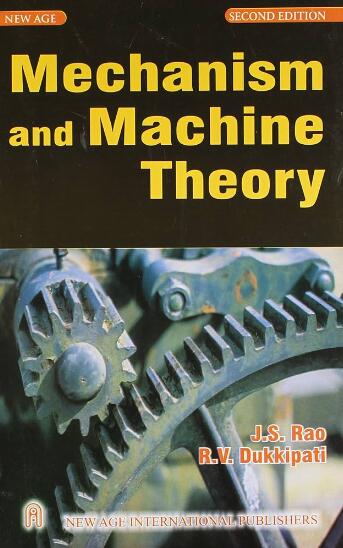Comprehensive SCME: A nonlinear large-deformation modeling approach for planar compliant mechanisms
IF 4.5
1区 工程技术
Q1 ENGINEERING, MECHANICAL
引用次数: 0
Abstract
This work presents a comprehensive energy method based on the smooth curvature model (CoSCME) for modeling the nonlinear large deformations of planar compliant mechanisms, addressing limitations of existing methods. CoSCME accounts for large axial and bending deformations, as well as strain and stress in beams with arbitrary shapes, including straight beams and curved beams. Both axial strain and curvature are fitted using shifted Legendre polynomials, while the corresponding deformations are derived through integration. When modeling initially-curved beams, multiple linear regression is applied to determine the initial generalized coordinates. Additionally, CoSCME adapts to diverse application scenarios, including compresural beams, tensural beams, bistable mechanisms (with straight or initially-curved beams), and general lumped-compliance beams. The modeling of general lumped-compliance beams is achieved by defining moderate geometric parameters in the model and applying coordinate transformations. Various specific configurations of general lumped-compliance beams are then derived. Modeling results are validated through nonlinear finite element analysis conducted in Strand7, demonstrating high consistency. The proposed CoSCME exhibits considerable potential for advancing the design, modeling, and optimization of planar compliant mechanisms.
综合SCME:平面柔性机构的非线性大变形建模方法
本文提出了一种基于光滑曲率模型(CoSCME)的综合能量方法,用于平面柔性机构的非线性大变形建模,解决了现有方法的局限性。CoSCME考虑了任意形状的梁(包括直梁和弯梁)的大轴向和弯曲变形,以及应变和应力。轴向应变和曲率均采用移位勒让德多项式拟合,而相应的变形则通过积分得到。在对初始弯曲梁进行建模时,采用多元线性回归确定初始广义坐标。此外,CoSCME适用于各种应用场景,包括压缩梁、张拉梁、双稳机构(具有直梁或初始弯曲梁)以及一般的集总弯曲梁。通过在模型中定义适当的几何参数并进行坐标变换,实现了一般集总柔度梁的建模。然后推导了一般集总柔度梁的各种特殊构型。在Strand7中进行非线性有限元分析,验证了建模结果的一致性。所提出的CoSCME在推进平面柔性机构的设计、建模和优化方面显示出相当大的潜力。
本文章由计算机程序翻译,如有差异,请以英文原文为准。
求助全文
约1分钟内获得全文
求助全文
来源期刊

Mechanism and Machine Theory
工程技术-工程:机械
CiteScore
9.90
自引率
23.10%
发文量
450
审稿时长
20 days
期刊介绍:
Mechanism and Machine Theory provides a medium of communication between engineers and scientists engaged in research and development within the fields of knowledge embraced by IFToMM, the International Federation for the Promotion of Mechanism and Machine Science, therefore affiliated with IFToMM as its official research journal.
The main topics are:
Design Theory and Methodology;
Haptics and Human-Machine-Interfaces;
Robotics, Mechatronics and Micro-Machines;
Mechanisms, Mechanical Transmissions and Machines;
Kinematics, Dynamics, and Control of Mechanical Systems;
Applications to Bioengineering and Molecular Chemistry
 求助内容:
求助内容: 应助结果提醒方式:
应助结果提醒方式:


